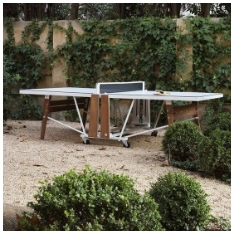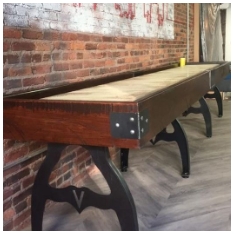Ping pong, also known as table tennis, is a popular indoor sport enjoyed by people of all ages. The game is played on a game table specifically designed for ping pong, using paddles and a lightweight ball. While the game can be competitive, it is also a fun way to develop hand-eye coordination and stay active.
If you are new to ping pong, understanding the basic rules, equipment, and playing techniques will help you enjoy the game and improve your skills over time. This article explains how to play ping pong step by step, including how to set up the game table, the rules of the game, and essential playing strategies.
What You Need to Play Ping Pong
The Game Table
Ping pong is played on a rectangular game table measuring 2.74 meters in length and 1.525 meters in width. The table is divided into two equal halves by a net that is 15.25 centimeters high. Each half of the table is further divided by a centerline when playing doubles, but in singles, the entire table is used.
A good quality game table should have a smooth surface that allows the ball to bounce consistently. Portable and foldable tables are available for home use, while professional tables are more durable and offer a higher bounce quality.
Other Essential Equipment
- Ping Pong Paddles: Each player needs a paddle (also called a racket or bat) with a wooden blade covered in rubber on both sides.
- Ping Pong Balls: The ball is small, lightweight, and typically made of plastic, measuring 40 millimeters in diameter.

How to Set Up a Ping Pong Game Table
- Place the game table on a flat surface to ensure fair play.
- Attach the net securely at the center of the table, making sure it is taut and the correct height.
- Check that the table surface is clean and free of dust to allow proper ball movement.
- Ensure adequate space around the table for comfortable play.
Basic Rules: How to Play Ping Pong
Starting the Game
The game begins with a serve. The server must toss the ball at least 16 centimeters in the air and hit it so that it bounces once on their side and then on the opponent’s side of the game table.
Scoring Points
- A player earns a point if the opponent fails to return the ball, hits it off the table, or allows the ball to bounce twice on their side.
- The game is typically played to 11 points, and players must win by a margin of at least two points.
- Players switch serving every two points until the game ends.
Legal Play
- The ball must always bounce on the opponent’s side after being hit.
- Players cannot touch the table or net during play.
- In doubles, the serve must go diagonally, and players must take turns hitting the ball.
How to Play Ping Pong: Basic Techniques
Holding the Paddle
There are two common grip styles:
- Shakehand Grip: Similar to shaking someone’s hand, this grip is widely used and offers flexibility for both forehand and backhand strokes.
- Penhold Grip: The paddle is held like a pen, providing better control for short-range shots.
Basic Strokes
- Forehand Drive: A quick, controlled shot using the front side of the paddle.
- Backhand Drive: A controlled shot using the back side of the paddle.
- Push: A gentle shot used to keep the ball low and slow.
- Topspin: A more advanced shot where the ball spins forward, making it dip quickly on the opponent’s side.
Footwork
Good footwork is essential in ping pong. Stay light on your feet and be ready to move quickly in any direction. Keep your knees slightly bent and your weight balanced on the balls of your feet.
Game Strategies and Tips
Focus on Consistency
As a beginner, concentrate on keeping the ball on the game table consistently. Avoid focusing on powerful shots initially. Building control will help you win points through steady play.
Practice Serves
Serving is an important part of learning how to play ping pong. Practice different serves such as backspin, topspin, and side-spin to make it harder for your opponent to predict your moves.
Watch Your Opponent’s Movements
Pay attention to your opponent’s body position and paddle angle. This can give you clues about the direction and speed of their shots.
Develop a Ready Position
Always return to a balanced ready position after each shot. This helps you prepare quickly for the next return.

How to Improve Your Ping Pong Skills
Practice Regularly
The best way to improve your ping pong skills is through consistent practice. Focus on mastering the basic strokes, improving your footwork, and playing regularly on a proper game table.
Play Against Different Opponents
Playing against people with varying skill levels helps you learn new strategies and adapt to different playing styles.
Watch Professional Matches
Observing professional ping pong matches can give you insights into advanced techniques, tactical play, and good habits.
Work on Spin Control
Once you are comfortable with basic strokes, start practicing spin shots. Learning to add spin and reading the spin from your opponent will greatly improve your game.
Conclusion
Learning how to play ping pong is both enjoyable and beneficial for developing reflexes, coordination, and strategic thinking. Whether you are playing for fun or aiming to compete, starting with the correct equipment and understanding the game’s basic rules will set a strong foundation.
Make sure you practice regularly on a good game table, pay attention to your technique, and enjoy the process of improving. With time and effort, you can develop the skills to play confidently and compete with others.





